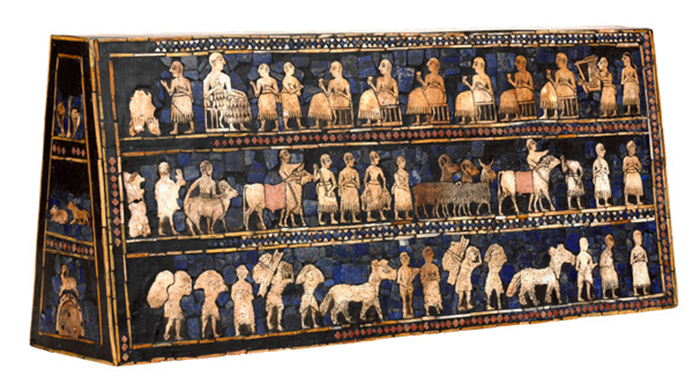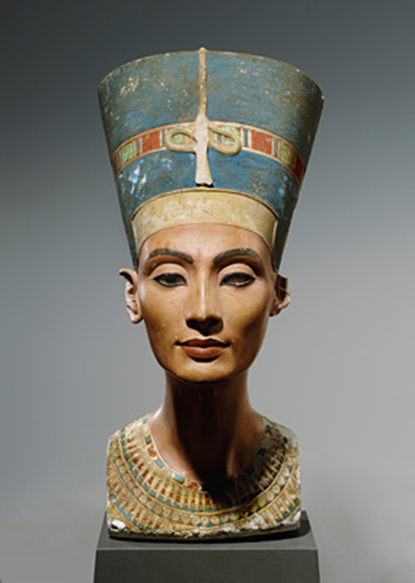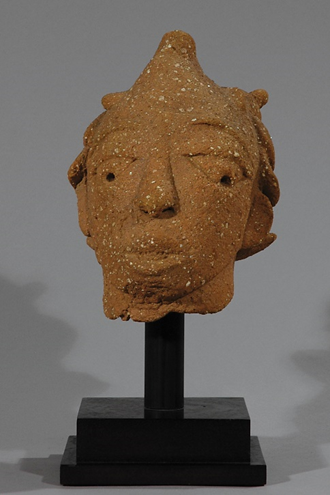Several individuals tend to take artworks and design for granted yet it is widespread in human’s daily lives. Artworks reveal the use of people’s imaginations and their expression of something special such as culture and other forms of lifestyle. This paper discusses three artworks namely the Standard of Ur, the Nefertiti Bust, and the Nok Head, as well as a comparison of their key features.
The Standard of Ur

This artwork is part of Mesopotamian culture originating from the Sumerian artifact. The artwork was made during the 3rd millennium B.C, the time of the First Dynasty of Ur during the Early Dynasty period. The artwork is displayed as a hollow wooden box with different decorations. The age is estimated to be about 4,600 years according to the Standard of Ur box at the British Museum (British Museum, n.d). The artwork is decorated with the lapis lazuli, red limestone, and mosaic from the shell to symbolize the life of the Mesopotamian residents of the time. In 1927, Leonard Woolley indicated that the Standard of Ur was found in one of the largest tombs in the city of Ur, in the Royal cemeteries in Iraq. The image is 21.59 centimeters wide with a length of 49.53 centimeters (British Museum, n.d). The sculpture is currently presented at the British Museum in London.
The discoveries by Leonard Woolley in the corner of a chamber, next to the shoulder of a royal deceased show the Standard of Ur was buried together with highly respected rulers. The symbol of power is signified by the representation of the Sumerian army, chariots pulled by donkeys, infantry with cloaks carrying spears, enemies’ soldiers killed with axes, and some people paraded naked in front of the king who holds a spear. The Standard of Ur also signifies peace by making use of seated figures wearing woolen fringed skirts or woolen fleeces and musicians playing lyre. Some researchers associate the Standard of Ur as a music box and others as the holder of currency used to pay people during the war (AP Art History, n.d). Therefore, the real function of the Standard of Ur is not known.
The Nefertiti Bust

This artwork is one of the most essential images in the culture of the Egyptians. The Nefertiti dates back to 1345 B.C and represents a classical art style of the Egyptian from the work of the Amarna established during the time of Akhenaten’s reign. The artwork is made from a limestone core covered with painted stucco layers and black painted eyes with inserted quartz fixed with bee wax. The sculpture is decorated with colored paintings to indicate the beautiful appearance of the queens. The Nefertiti Bust is 48 centimeters tall with a weight of 20 kilograms. Ludwig Borchardt, a German archeologist discovered the artwork in 1912 at the workshop of sculptor Thutmose in Amarna, one of the ancient Egyptian cities constructed by Akhenaten of the late 18th Dynasty (History.com, 2019). The sculpture is currently presented at the Neues Museum in Berlin.
The Nok Head

This artwork represents African culture and the oldest recognized figurative sculpture from the south of the Sahara. Therefore, the Nok heads could be considered as the earliest traces of the outstanding tradition of south Saharan sculptures. According to the Department of AAOA (n.d.), the artworks date back to the 4th century A.D. The image is made of gravel and clay called the slip. The use of gravel shows the use of iron, the practice of smelting for forgery and tools. Therefore, the Nok culture could be regarded as an Iron Age civilization. The Nok Head is currently presented at Christa’s Fine Tribal Modern Art gallery.
The Nok Head have specific stylistic trait including triangular eyes and perforated mouth, nose, pupils, and ears depicting a person with bold, abstracted character. A unique hairstyle, the use of jewels and ornaments, and variety of beauty in the Nok Heads’ design offer a fascinating record of body decorations in the culture of the Nok people. However, the sculpture is eroded, thus presenting significant challenge to describe the original texture. The 2.45 kilograms Nok Head is 22 centimeters high and 16 centimeters in width (Department of AAOA, n.d.). The image of the artwork was discovered in Nigeria after a local mining activity during the first half of the twentieth century.
Comparison
Similarities of the Three Images
The three artworks collectively represent the peculiarities of their respective cultures. Significantly, the cultures depict respect of the people towards their gods and rulers. For instance, the Standard of Ur was found in the tomb of a revered ruler, thus demonstrating respect to the highly ranked leaders and the burial cult. Accordingly, it can be argued that respected rulers were buried with the standard of Ur. The Nefertiti Bust and the Nok Head show the powers of the rulers and their highness because the people widely sculptured the heads of these respected leaders. Additionally, the Nefertiti Bust and the Nok Heads had prestigious decorations showing important ancestors and political people. Other than showing the powers of the rulers and their highness, the Nefertiti Bust and the Nok Head are all found in Africa. Accordingly, it is right to say that the Africans’ culture widely represented their rulers using sculptures.
Differences between the Three Images
The essence of The Nok Head is well known because of its current use in shrines and thatched roofs in Nigeria. Therefore, the figures are speculated to have been used in religious rituals, ancestral cults, and funeral ceremonies in ancient times. Additionally, the sculptures were found submerged underground, an indication that they were buried with people. Nok Heads are unique because of their large heads and facial features. Regarding the Standard of Ur, no clear information about its use has been recognized. The Nefertiti Bust is decorated with different colors that makes it vibrant, an indication of the queens’ physical appearances.
Considering all the three images, the Nok head does the best job of establishing the leadership and the power of the gods or rulers. The reason is that the Nok Heads are still used in thatched roofs and shrines in Nigeria. The use of the Nok Heads in thatched roofs and shrines by some of the present Nigerian residents shows the value of the sculptures, and that the ancient culture is still impressive. The other two have unclear information regarding their functions. Researchers have constantly guessed the real function of the Standard of Ur, with portraying it as a music box and others a holder of currency. The Nefertiti Bust is known to represent powerful rulers but the culture is not used by the present-day people living in the place of origin, which validates that it is of less importance in the modern culture.
References
AP Art History. (n.d).
British Museum. (n.d). The British Museum.
History.com. (2019). Nefertiti.
Department of AAOA (n.d.). Nok Terracottas (500 B.C.–200 A.D.). Christa’s Fine Tribal Modern Art Gallery.